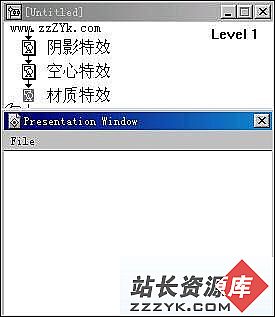用ASIO编写UDP通信程序
ASIO的TCP协议通过boost::asio::ip名空间下的tcp类进行通信,举一返三:ASIO的UDP协议通过boost::asio::ip名空间下的udp类进行通信。我们知道UDP是基于数据报模式的,所以事先不需要建立连接。就象寄信一样,要寄给谁只要写上地址往门口的邮箱一丢,其它的事各级邮局 包办;要收信用只要看看自家信箱里有没有信件就行(或问门口传达室老大爷)。在ASIO里,就是udp::socket的send_to和receive_from方法(异步版本是async_send_to和asnync_receive_from)。
下面的示例代码是从ASIO官方文档里拿来的(实在想不出更好的例子了:-P)
服务器端:
//
// server.cpp
// ~~~~~~~~~~
//
// Copyright (c) 2003-2008 Christopher M. Kohlhoff
// (chris at kohlhoff dot com)
//
// Distributed under the Boost Software License, Version 1.0.
// (See accompanying
// file LICENSE_1_0.txt or
// copy at http://www.boost.org/LICENSE_1_0.txt)
//
#include <ctime> www.zzzyk.com
#include <iostream>
#include <string>
#include <boost/array.hpp>
#include <boost/asio.hpp>
using boost::asio::ip::udp;
std::string make_daytime_string()
{
using namespace std; // For time_t, time and ctime;
time_t now = time(0);
return ctime(&now);
}
int main()
{
try
{
boost::asio::io_service io_service;
// 在本机13端口建立一个socket
udp::socket socket(io_service, udp::endpoint(udp::v4(), 13));
for (;;)
{
boost::array<char, 1> recv_buf;
udp::endpoint remote_endpoint;
boost::system::error_code error;
// 接收一个字符,这样就得到了远程端点(remote_endpoint)
socket.receive_from(boost::asio::buffer(recv_buf),
remote_endpoint, 0, error);
if (error && error != boost::asio::error::message_size)
throw boost::system::system_error(error);
std::string message = make_daytime_string();
// 向远程端点发送字符串message(当前时间)
boost::system::error_code ignored_error;
socket.send_to(boost::asio::buffer(message),
remote_endpoint, 0, ignored_error);
}
}
catch (std::exception& e)
{
std::cerr << e.what() << std::endl;
}
return 0;
}
客户端:
//
// client.cpp
// ~~~~~~~~~~
//
// Copyright (c) 2003-2008 Christopher M. Kohlhoff
// (chris at kohlhoff dot com)
//
// Distributed under the Boost Software License, Version 1.0.
// (See accompanying file LICENSE_1_0.txt or
// copy at http://www.boost.org/LICENSE_1_0.txt)
//
#include <iostream>
#include <boost/array.hpp>
#include <boost/asio.hpp>
using boost::asio::ip::udp;
int main(int argc, char* argv[])
{
try
{
if (argc != 2)
{
std::cerr << "Usage: client <host>" << std::endl;
return 1;
}
boost::asio::io_service io_service;
// 取得命令行参数对应的服务器端点
udp::resolver resolver(io_service);
udp::resolver::query query(udp::v4(), argv[1], "daytime");
udp::endpoint receiver_endpoint = *resolver.resolve(query);
udp::socket socket(io_service);
socket.open(udp::v4());
// 发送一个字节给服务器,让服务器知道我们的地址
boost::array<char, 1> send_buf = { 0 };
socket.send_to(boost::asio::buffer(send_buf), receiver_endpoint);
// 接收服务器发来的数据
boost::array<char, 128> recv_buf;
udp::endpoint sender_endpoint;
size_t len = socket.receive_from(
boost::asio::buffer(recv_buf), sender_endpoint);
std::cout.write(recv_buf.data(), len);
}
catch (std::exception& e)
{
std::cerr << e.what() << std::endl;
}
return 0;
}
补充:软件开发 , 其他 ,




